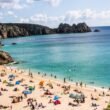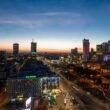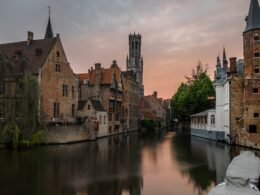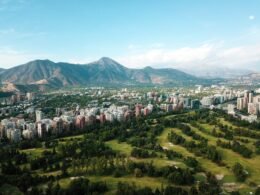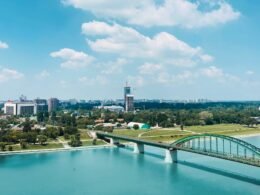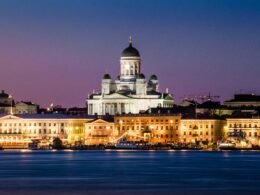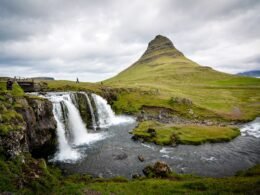Colombia is a country of immense transformation – in the past 50 years, it has changed from being one of the most dangerous countries in the world to one of the most popular tourist destinations globally, welcoming nearly five million tourists per year.
There is no shortage of sights, tastes, and experiences in Colombia. The country is known for its diverse array of metropolitan cities, each with its own unique culture and attractions. If you are planning a trip to Colombia, here is the best 10-day itinerary to see the highlights and best cities.
Table of Contents
Days 1-4: Medellín
Day 1: Arrive in Colombia, Plaza Botero, Botanical Garden

Welcome to Colombia! The airport you will be landing in, José María Córdova International Airport, is inconveniently located outside of the city, in Rionegro. It takes about 40 minutes to get to Medellín from the airport. You can take a private taxi (which will cost you about $20 USD), or go the cheaper route by getting on the public bus or collectivo taxi, a taxi shared with strangers, which both cost about $5 USD per ride. Ask airport staff where to find the buses and collectivos outside of the airport.
Your Colombia journey begins in Medellín, known by Colombians as La Ciudad de Eterna Primavera, or the City of Eternal Spring, because of its pleasant spring-like weather all year long. Make sure to pack plenty of warm weather clothes, but also some light layers for the cooler evenings.
After settling into your accommodation, don’t waste any time and head directly to Medellín’s downtown, or known in Spanish as El Centro. Here is where the heartbeat of the city lies, and you will find plenty of movement, music, food, and sights to see. Downtown you can find Plaza Botero, or Botero Square, which is an open plaza adorned with the immense statues from famous Colombian artist Fernando Botero, best known for his art depicting charmingly chubby subjects.
If you are a museum lover, don’t miss the Musuem of Antioquia, which is located at the plaza. It is the second-oldest musuem in Colombia and houses some of the most important art collections in the country. It also has the largest collection of art pieces by Colombian artists Fernando Botero and Pedro Nel Gómez.
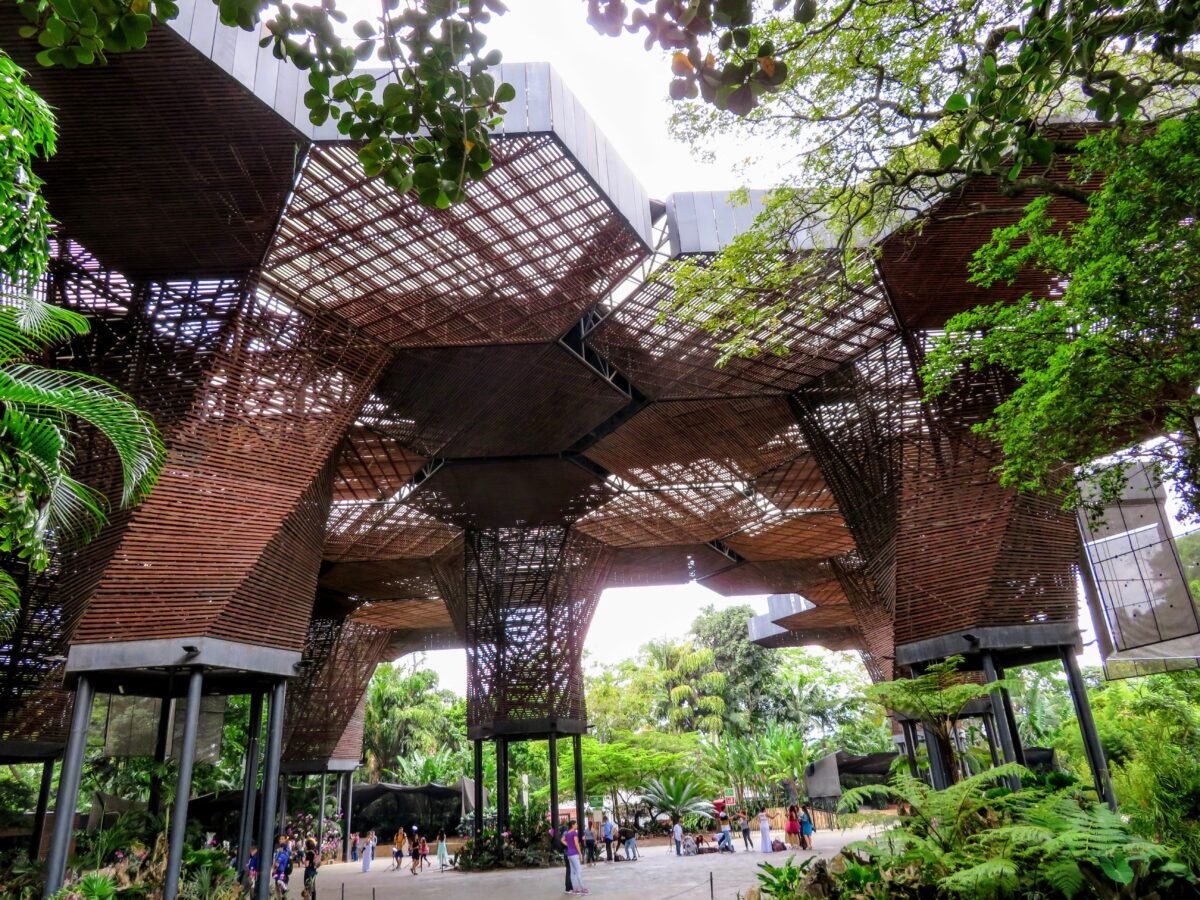
After walking downtown and getting a bite to eat, head over to Medellín’s Jardín Botánico, or Botanical Garden – a much needed serene escape from the hustle of the city. Entrance to the garden is free of charge, and you can enjoy nearly 14 hectares of green space for strolling or relaxing.
Day 2: Day Trip to Guatapé

Located about three hours outside of the city, Guatapé is the most popular day trip for visitors to Medellín. There are many different ways to get to Guatapé from Medellín – the most convenient way is to book a private tour and have transportation pick you up at your accomodation. These all-day tours usually cost anywhere between $50-100 USD per person. If you are a budget traveler and want to go solo, there are also public buses which travel to Guatapé from the city.
Before getting to Guatapé, make a pit stop at El Peñol, a giant rock where you can climb 740 steps to the top to get incredible panoramic views of Guatapé. Entrance to climb the rock costs about $5 USD. After that, head to the Guatapé town center, where you will find a labryinth of charming and colorful cobblestone streets which make for an unforgetable photoshoot. Make sure to go souvenir shopping in one of the many stores, or take a tuk-tuk tour to learn about the history of the small town and the origin of the colorful houses.
Day 3: Comuna 13
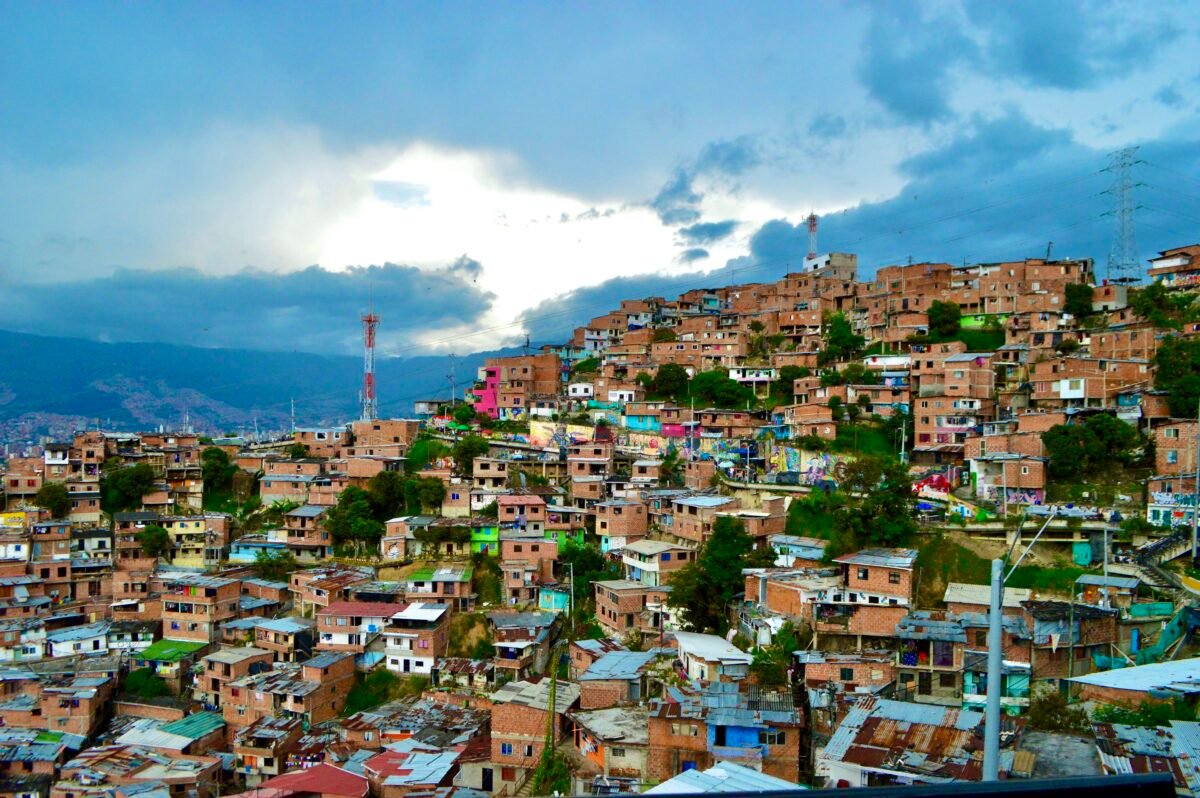
One of the most special attractions of Medellín, Comuna 13 is the sight that you don’t want to miss. Comunas, or neighborhood districts, are all over Medellín, but Comuna 13 has a specific history in the city, as it was previously known as the epicenter of “The Murder Capital of the World,” and was wrought with violence and armed conflict. Since then, the area has undergone an incredible transformation, boasting safety and an incredible art and music scene. One of its most unique features is its elaborate escalator system, which has been transformative for local residents and tourists alike, allowing you to scale to the top of the comuna in very little time.
If you want to get the most out of your visit to Comuna 13, make sure to book a free walking tour with one of the many tour operators in Medellín, such as Zippy Tours. They typically last about three hours, and are run by local guides who grew up in the Comuna and lived through the violence and transformation. Going on a tour will give you a better appreciation of the background and history of the area.
Day 4: Check out El Poblado, Casa de la Memoria and Pueblito Paisa

On your last day in Medellín, check out the hip neighborhood of El Poblado, which is located in central Medellín. This is the hub in the city of modern restaurants, cafes, shops, and nightclubs. It is the most popular area of the city for foreigners to stay, so you are sure to run into other fellow tourists.
If you are interested in learning more about Colombia’s history, both in its tragic history of violence as well as its transformational upheaval, head over to Museo Casa de la Memoria, or Memory House Museum. Here, you can find several exhibits documenting Colombia’s history of civil armed conflict and rememberance of the lives lost during this time.
Lastly, stop by Pueblito Paisa on your final night in Medellín. It is a hilltop replica old-syle village with plenty of restaurants and souvenir shops as well as panoramic views of the city. It is perfect for watching the sunset and seeing the nighttime skyline.
Days 5-7: Bogotá
Day 5: Arrive to Bogotá, Plaza de Bolivar, shopping in La Séptima

Next on the itinerary is Bogotá, the capital of Colombia. Quite different in climate in comparison to Medellín, Bogotá is known for rainier and cooler weather. Don’t let that stop you though – just rememeber to keep an umbrella in your backpack.
After settling into your accomodation, head out to the city center and check out Plaza de Bolivar, or Bolivar Plaza, Bogotá’s iconic European-style plaza. This is where the main legislative buildings are located, and is the sight for monumental governmental decisions, protests, and gatherings. On a normal day, you’ll find the plaza full of Colombians, tourists, and plenty of pigeons. If you are lucky, you may find people with llamas who will let you get a photograph with them for a few dollars in exchange.
After spending time in the plaza, make your way to the entrance of La Séptima avenue, which lies directly behind the plaza. This is a multi-block strip loaded with stores, street food vendors, artisanal jewelry and craft makers, and street performers. There is never an absence of movement and music in La Séptima, and simply walking along it can keep you entertained for hours on end. If you are in need of souvenirs for friends and family, make sure to stop by the Mercado Artesanal, or Artisanal Market, an extensive indoor market with several stalls selling t-shirts, coffee, bags, and much more.
Day 6: Summit Monserrate and wander through La Candelaria

Start off early the next morning by heading to Monserrate, a towering hill in the heart of the city with a church sitting at the top. Although the original idea of the Monserrate was religious in nature, today, it is a bustling tourist hub, attracting thousands of Colombian and international tourists.
Monserrate can be summitted by foot, tram, or cable car. If you are up for a challenge, go up by foot, which takes about 1-2 hours depending on your fitness level. It is far more rewarding, as you can treat yourself for all of your hard work with a filling lunch at the top. You’ll find plenty of places to eat, a church, and souvenir shopping at the top.

After coming back down, head over to La Candelaria district, or one of Bogotá’s orginal old colonial neighborhoods. Here, you can explore the maze of cobblestone streets, full of murals, unique restaurants, and handicraft stores. Nearby, you can also visit the Gold Museum, which houses one of the biggest collections of pre-hispanic gold materials.
Day 7: Day trip to Zipaquirá Salt Cathedral

Located about an hour outside of Bogotá, Zipaquirá is a small village that is home to the one of the three underground salt cathedrals in the world. It was built in 1995, and has attracted over 13 million visitors to date. You can enter with a structured tour, which is included in your ticket, or walk arounf freely. Although the cathedral was originally built for Catholic worship, it’s lighting, sculptures, and famous mirror pool are amazing sights for religious and non-religous visitors alike. Basic entrance tickets cost about $17 USD for foreign tourists and about $11 for Colombian nationals.
Days 8-10: Cartagena
Day 8: Arrive to Cartagena and explore the Old City
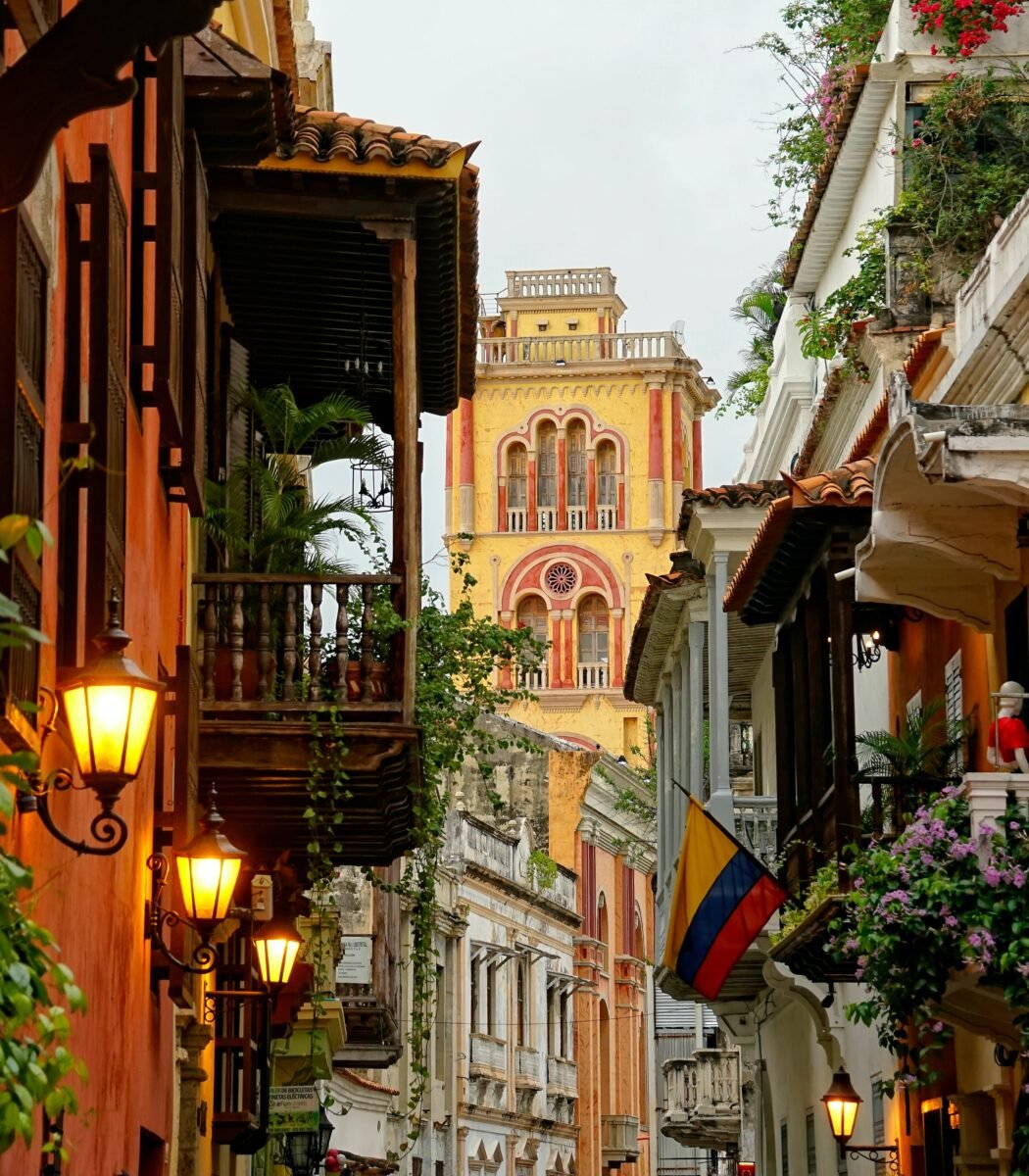
The last stop on the 10-day itinerary is Cartagena, located on Colombia’s Caribbean coast. Once arriving and settling in, head out to the most popular attraction of the city – the Old City. It is the center of the Cartagena with traditional Spanish colonial design. There is no shortage of photos to take and food to eat, so take your time to stroll through the cobblestone streets. Make sure to try some of the traditional Colombian street food, like arepa (corn cake filled with cheese), or most unique to the coast – ceviche, or raw fish marinated in citrus juice.
For a one-stop trip for all of your handmade souvenir wants, make sure to stop by Las Bóvedas market, an indoor marketplace selling everything from art, clothes, candy, jewelry, and more. At the end of the day, climb up to one of the city walls surrounding the Old City and enjoy a beer or Colombian treat as you watch the sunset.
Day 9: Visit Playa Blanca

You cannot visit the Colombian coast without visiting one of its beaches. While in Cartagena, make a stop at Playa Blanca, one of Colombia’s most famous beaches. Although close in proximity, Playa Blanca is not technically in Cartagena, but instead in the nearby Rosario Islands. Luckily, it is very accessible by a shuttle or speedboat ride of about 45 minutes. There are also a plethora of private tour companies which can organize transport and an entire day trip to the beach for you.
The beach is most famous for its white sand and crystal blue water. Apart from lounging on the beach, you can rent a jetski, enjoy fresh fried fish, or go on a boat tour of the neighboring Rosario Islands. One unique activity you can also find at Playa Blanca is a bioluminescent plankton tour, where you can take a 20-minute boat ride to witness the glowing plankton of the shore at night, which creates a spectacular blue light show.
Final Thoughts
If you are looking for a country full of diversity, hospitality, and unforgettable expeirences, look no further than Colombia. Because of the sheer amount of things to see and do in Colombia, consider booking a trip for at least 10 days to ensure that you see all the unmissable highlights.
Do get a sample of all aspects of diversity that Colombia has to offer, Medellín, Bogotá, and Cartagena are the best cities to visit on this 10-day itinerary. We’re certain that at the end of your trip, you will not want to leave!



